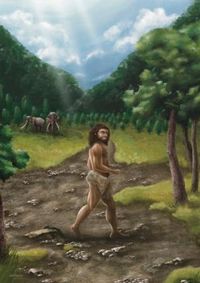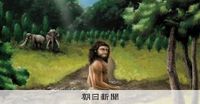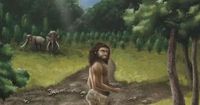A fossil of a human mandible found on the seabed off Taiwan, dating from 190,000 years ago to 10,000 years ago, has been identified as belonging to a male Denisovan, an extinct archaic human, according to an international research team including the Graduate University for Advanced Studies and the University of Tokyo. This significant discovery was reported in the U.S. science journal Science on April 10, 2025.
The fossil, previously known as "Penghu Man," was originally classified in 2015 when it was found in the Penghu Channel between western Taiwan and the Penghu Islands. The research team, which also included scientists from Taiwan's National Museum of Natural Science and the University of Copenhagen in Denmark, conducted a detailed analysis of the amino acid sequence from the fossilized remains. This analysis confirmed that the mandible belonged to a Denisovan, a close relative of Neanderthals.
Assistant Professor Reiko Takanashi from the Graduate University for Advanced Studies noted, "The discovery in warm Taiwan suggests that Denisovans were distributed over a wide area in southern Asia." Prior to this finding, Denisovan fossils had only been identified in Siberia and Tibet, making this discovery particularly groundbreaking.
Denisovans were first identified in 2010 when genome analysis of bone and tooth fragments from Denisova Cave in Siberia revealed their existence. This identification was spearheaded by Svante Pääbo of the Max Planck Institute for Evolutionary Anthropology, who received the Nobel Prize in Physiology or Medicine in 2022 for his work. Despite the identification of Denisovans, much about their physical appearance and distribution remained a mystery until now.
The newly analyzed mandible displays distinct features that set Denisovans apart from both Neanderthals and modern humans (Homo sapiens). The fossil exhibits a robust jaw and large molars, characteristics that hint at a strong physique. This finding not only clarifies the appearance of Denisovans but also expands the understanding of their geographical distribution.
Professor Hiroki Ota from the University of Tokyo commented on the implications of this discovery, stating, "If more fossils identified as Denisovan are found, Neanderthals could be considered the archaic humans of western Eurasia, and Denisovans the archaic humans of eastern Eurasia." This perspective could reshape the narrative of human evolution and migration across the continent.
The Penghu Man fossil is estimated to be from either 190,000 to 130,000 years ago or 70,000 to 10,000 years ago, based on associated animal fossils. The fossil includes the right half of an adult's mandible, with molars still intact. Although DNA extraction was unsuccessful due to degradation, the research team successfully isolated proteins from the bone's collagen and tooth enamel, identifying unique mutations characteristic of Denisovans. The analysis confirmed the fossil belonged to a male.
Interestingly, genetic studies have shown that modern humans, including those from Japan, carry traces of Denisovan ancestry. This interbreeding occurred tens of thousands of years ago, and the discovery of the Penghu Man fossil adds a new layer to the understanding of how these groups interacted.
In the broader context of human evolution, it is believed that hominids first appeared in Africa between 7 million and 6 million years ago. These early humans evolved and migrated into Eurasia and Southeast Asia, where they eventually gave rise to archaic humans. Modern humans, who emerged in Africa between 300,000 and 200,000 years ago, are thought to have spread worldwide, leading to the extinction of many archaic human species.
Professor Yoichi Hatanobe from the University of Tokyo's University Museum remarked, "Some of the fossils in China that have been classified as archaic humans may be Denisovans." This assertion opens the possibility of further discoveries that could provide additional insights into the Denisovan lineage and its impact on modern human genetics.
As the research community continues to explore the implications of this discovery, it highlights the importance of interdisciplinary collaboration in uncovering the complexities of human history. The Penghu Man fossil not only sheds light on the existence of Denisovans in southern Asia but also raises questions about the interactions between different human species during prehistoric times.
In conclusion, the identification of the Penghu Man fossil as a Denisovan marks a pivotal moment in the study of human evolution. It challenges previous assumptions about the geographical distribution of Denisovans and underscores the intricate tapestry of human ancestry. As researchers delve deeper into the genetic legacy left by these ancient peoples, the story of human evolution becomes increasingly rich and multifaceted.









